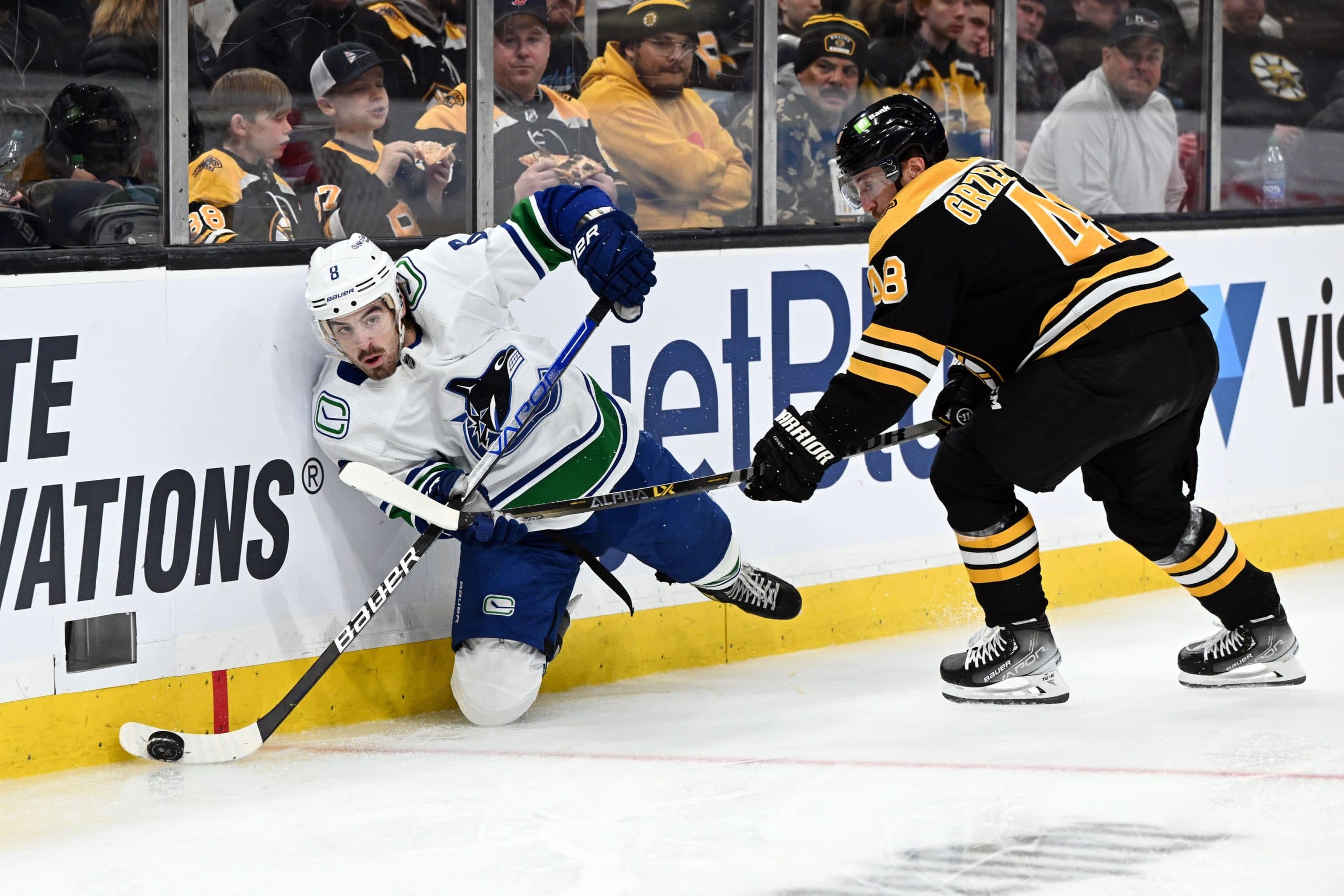Times are tough in Vancouver, and we know we’re not breaking any major journalistic ground here with a headline approximating “Current Canuck is struggling.”
But the struggles being experienced by Conor Garland, in particular, are so noteworthy that they deserve their own article.
This is that article.
Last season was Garland’s first with the Canucks, and his performance was, if anything, underrated.
Sure, Garland notched 19 goals and 52 points through 77 games, setting a new career high, but that didn’t tell the full story of his production. All but three of those points came at even strength, and Garland’s EV points-per-60 of 2.62 not only led the team, but was a full-point-per-60 higher than any other Canuck not named JT Miller. Garland, who received very little power play time, had to get it done at even strength.
In other words, Garland was arguably the Canucks’ best player at 5v5 throughout the entire 2021/22 season.
In 2022/23, however, he is arguably their worst.
Here, Garland’s basic stat count tells plenty of the story. Through 23 games, he’s sitting on just three goals and seven assists for a total of ten points. That puts him on pace for about 11 goals and 36 points across a full 82-game schedule — easily the worst pace of Garland’s career.
It gets worse once you realize that, unlike last season, Garland is getting some power play time this year. Three of those ten points have come with the man advantage, giving Garland just seven even-strength points on the season.
That’s fewer than one every three games.
Remember that EV points-per-60 stat that Garland dominated in 2021/22?
In 2022/23, Garland has among the worst rates on the entire Canucks roster. His EV points-per-60 sits at a paltry 1.18 right now, putting him just 0.01 ahead of rookie fourth-liner Nils Aman.
Only two other Canucks forwards have worse rates than Garland, and that’s Vasily Podkolzin and Curtis Lazar.
A whopping 12(!) Canucks forwards have higher EV points-per-60 rates than Garland. Even worse, so do three defenders. Such luminaries as Jack Studnicka, Sheldon Dries, and Luke Schenn are all outproducing Garland at 5v5.
To go from first place to 13th place in any one stat category within the span of a year would be concerning. When it’s a stat as fundamental to a player’s success as “even-strength production,” it’s a red alert.
And we’re not just cherry-picking stats here, either. Garland’s 5v5 numbers are down quite literally across the board.
His 5v5 Corsi? Down from 53.05% in 2021/22 to 47.77% this year.
His 5v5 shot control? Down from 54.37% to 46.23%.
His 5v5 control of scoring chances? Down from 53.05% to 48.24%, and down to 42.00% when it comes to high-danger chances, specifically.
His 5v5 expected goals? Down from 54.52% to 43.50%, a drop of more than ten points.
We’re not the only ones to have noticed, either. Bruce Boudreau has, too. Although Garland had clearly earned some more ice time at the season’s outset, he’s slowly but surely lost those privileges as the year has worn on.
Over the past six games in particular, Garland has averaged just 12:39 in overall ice time, including a season-low of 9:53 against Colorado.
If any trust was gained, it’s quickly being lost. It’s not hard to see why, either, because it’s not like anyone really needed all of these statistics to determine that Garland isn’t playing as well this year as he was last year.
All they have to do is watch the games.
Last season, Garland was a puck possession revelation. He dove into the corners against players twice his size and came out with the puck more often than not. And once he had the puck, it was impossible to get it back from him. Garland dipped, ducked, dodged, and dove all over the ice, keeping the puck on a string and keeping opponents in their frustrations all year long.
In 2021/22, when Garland was spinning, you just knew good things were about to happen.
In 2022/23, when Garland is spinning, it’s because he’s lost out there on the ice.
All of that fiery competitive spirit seems to have dissipated. Garland isn’t winning puck battles much anymore, and when he gets the puck, he’s generally losing possession one way or another — often via an uninspired play or a low-chance shot on net. He’s scoring on just 7.5% of his shots right now, a stat that will probably correct upward, but that also has plenty to do with the quality of his shot selection.
Garland just doesn’t appear to have that same drive to succeed — that same chip on his shoulder — that he did last year. And whereas his endless energy proved infectious to the Canucks in 2021/22, the same could be said this year, albeit in the opposite sense.
The Canucks, in general, are taking Garland’s lead in 2022/23, and it’s not been pretty.
But this article isn’t about the overall struggles of the team. It’s about Garland’s struggles, specifically, and they are notable in and of themselves.
Is this a truer measure of this player’s quality, and something that Canucks fans can expect to see from here on out?
Or was last year the “real Garland,” meaning fans should hold out for a return to form?
The answer is going to go a long way toward determining how folks feel about the remaining three full seasons of $4.95 million AAV left on Garland’s contract — both within the fanbase and leaguewide on the trade market.


